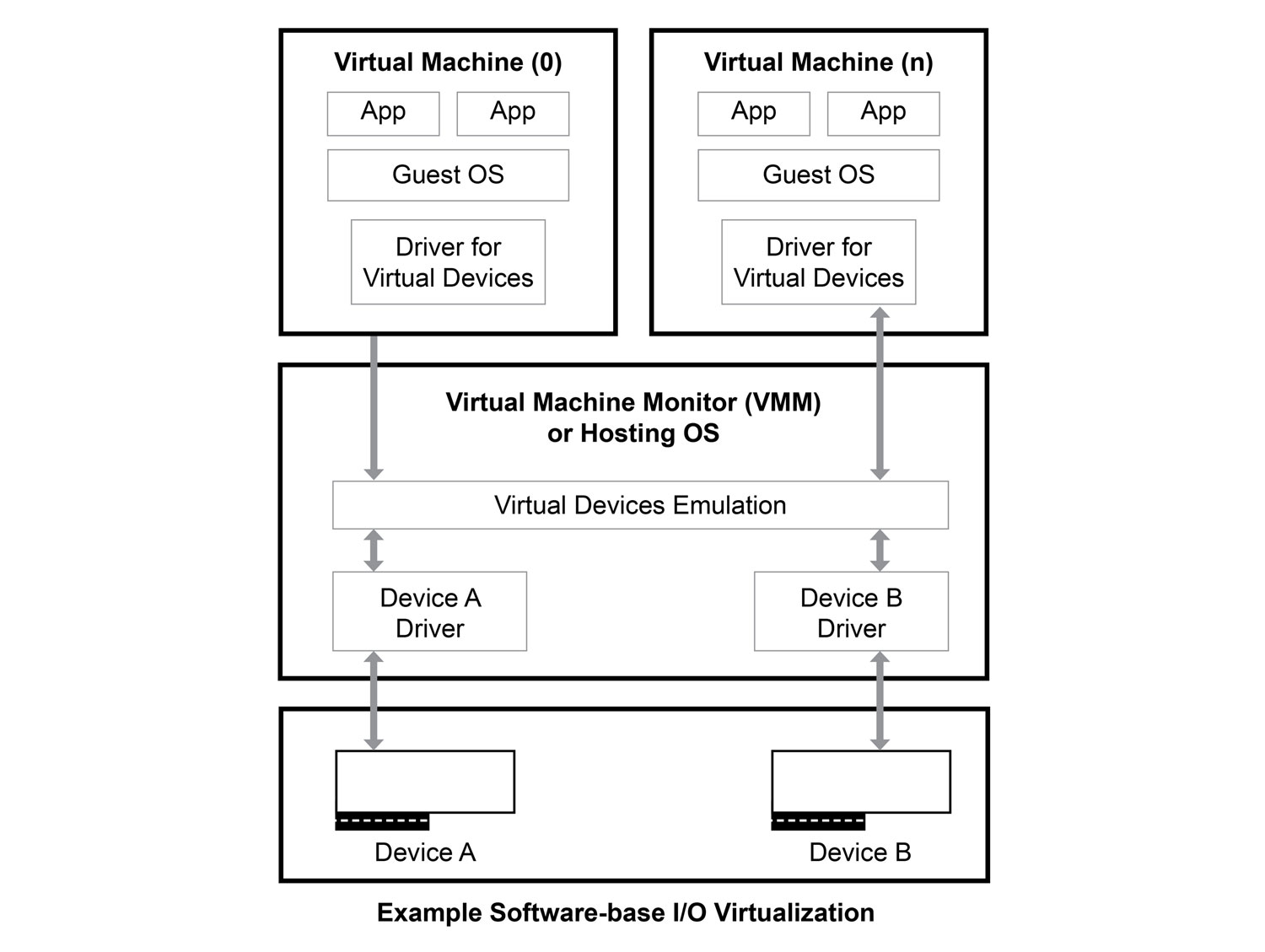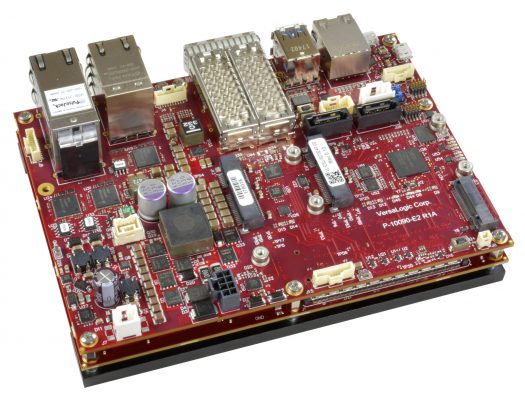AI and Edge Servers Go to the Extreme

The IoT edge is growing, but not necessarily getting smarter. More sensors mean more data, but that doesn’t make it valuable, actionable, or even relevant. These require turning data into information faster. And that demands bringing compute intelligence and analytics to the edge.
Automation, aerospace, and defense engineers are all too familiar with data overload. Large turbines, pumps, and other equipment can generate terabytes of data in just hours. Without high-performance edge computing, the bulk of this data becomes excess noise or loses its value with each passing moment.
Developers looking to design edge analytics are challenged by the integration of IT and OT, the need for balanced performance per watt (PPW) processing, and rugged design requirements.
Long-lifecycle applications that demand maximum intelligence at the far edge have found an answer in embedded microservers.
An Architecture for the IoT Edge
Embedded microservers have been available since SoCs started integrating more system functionality onto a single chip. This allowed “server-lite” platforms to be deployed in an increasing range of environments.
But true edge intelligence requires more than traditional microservers can provide:
- Workload consolidation. Low-latency edge analytics means interfacing directly with sensors and other input devices. In applications where size and power use come at a premium, engineers might integrate all of these functions on the same platform. And if OT and IT software reside on the same system, hardware-based virtualization and safety-critical hypervisors are a must.
- Deterministic IT and OT communications. Microservers need to access real-time operational data for embedded control tasks, while supporting non-deterministic enterprise applications. But deterministic IP-based connectivity is required for maximum efficiency and low latency.
- Rugged design. Edge microservers must withstand wide temperature ranges, shock and vibration, and other conditions that could compromise application data or the device itself.
Server-Grade Embedded
Significant enhancements that enable solutions such as server-grade embedded processors meet these growing demands. SoCs provide enterprise-class performance, networking, and virtualization alongside traditional embedded environmental and lifecycle support. One example is the 16-core, 16-thread Intel Atom® Processor C3958.
What immediately stands out about the Atom C Series is compute performance. The processor provides more than enough compute capability for edge analytics in a thermal design power (TDP) of just 31 W. To put that into perspective, an eight-core Intel® Xeon® D processor measures in with a 35 W TDP.
But what makes this device a server-grade embedded processor is virtualization support. Intel® Virtualization Technology (Intel® VT-x) provides hardware-assist for securely partitioning IT and OT software through the use of hypervisors. It also serves as the foundation for Intel® Virtualization Technology for Directed I/O (Intel® VT-d).
Intel VT-d is an extension of VT-x that allocates I/O bandwidth to virtual machines. This allows virtualized OSs and applications to avoid the throughput performance penalty of accessing resources through a VMM/hypervisor (Figure 1).

Finally, for edge microservers balancing both IT and OT workloads, deterministic Ethernet is a game changer. Based on the IEEE 1588 Precision Time Protocol (PTP), deterministic Ethernet enables IP-based communications with sensors and actuators by making them time-aware.
It also helps synchronize application data passing between the operational layer and enterprise software. With sufficient bandwidth allocation, deterministic Ethernet can provide reliable, low-latency communications in support of real-time edge analytics.
To learn more about Ethernet TSN, read Time-Sensitive Networking: Hype vs. Reality.
Smaller, Stronger Standards
These new technologies provide microservers with the performance needed for analytics at the edge.
One solution is the Grizzly VL-ESU-5070 from VersaLogic Corp. The Grizzly is a COM Express Extended embedded server unit (ESU) based on the Atom C3958 processor (Figure 2).

The 155 mm x 110 mm ESU is a two-board solution consisting of a compute module and carrier board. A heat plate is positioned on the processor side of the COM board to ensure sufficient thermal dissipation in high temperatures.
Despite this multi-board architecture, the Grizzly platform meets MIL-STD-202H shock and vibration requirements for deployment in extreme environments.
Grizzly integrates 128 GB of ECC memory to ensure data reliability in harsh environments. This helps combat single-bit errors that can occur in rough deployment conditions.
“Single-bit errors are usually due to a memory bit flipping, not any hardware failure,” said Bob Buxton, Product Manager at VersaLogic Corporation. “That’s usually caused by some form of radiation source, like an alpha particle or cosmic rays. So ECC memory is particularly relevant in the case of aircraft deployments and high-altitude, long-endurance drone deployments.”
And an M.2 socket is also present on the board if additional non-volatile storage is needed.
The Grizzly contains two 10 GbE and four 1 GbE ports, all of which support IEEE 1588 precision time synchronization. This allows edge microservers to maintain reliable, deterministic communications across data traffic flows. Two of the 1 GbE interfaces are PoE ports, making them capable of powering cameras, HMIs, wireless access points, and more.
“The 10 gigabit Ethernet ports could connect to the IT network and, via that, out to the cloud,” Buxton continued. “The gigabit Ethernet ports would operate on the OT side of the network. Then of course Grizzly also has GPIO that can be used to connect to sensors and actuators on the OT side.”
And support for Windows and Linux means that developers can easily take advantage of the virtualization technologies described above.
Bring It On: AI at the Edge
With more intelligence at the edge, organizations will find new ways to collect better data. Edge microserver architectures based on platforms like Grizzly provide a forward migration path.
“AI inferencing can actually be done on a variety of devices,” Buxton explained. “We’re seeing it done today on Intel Atom products, and therefore the 16 cores on the Grizzly’s C series should be able to handle those workloads easily.”
In cases where more performance is needed for AI and analytics workloads, an additional processor, such as an Intel® Myriad™ device on a mini-PCIe card, could be mounted in one of the Grizzly’s on-board sockets.
From a software perspective, virtualization technologies like those integrated in the Intel Atom C3958 assure that newer enterprise applications can be added, updated, or replaced safely without affecting existing applications. With long lifecycle support from Intel and VersaLogic, designing these capabilities into an embedded microserver can extend platform lifetime by years.
“Server-grade embedded” is here for edge analytics. Are you ready to take advantage?